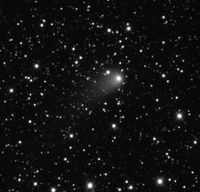NEO - Discovering
Discovering Near-Earth Objects (NEOs) is a real hard work, because you are looking for a needle in a haystack. So most asteroids today are discovered by automatic robotic surveys scanning on the dark side of the earth the sky all night long.
However, a discovery is worthless if no independent observer confirms it. So many observers (professionals, amateurs and robot systems) are trying to confirm newly reported discoveries in the next few days. It's easier because you know where to look. On the other hand, it is still difficult because most NEOs are not very bright and also very fast.
NEO - Confirmations [ show ]
The Minor Planet Center (MPC) is the official worldwide organization in charge of collecting observational data for minor planets (such as asteroids), calculating their orbits and publishing this information via the Minor Planet Circulars.
Among other things, it offers on the NEO confirmation page (NEOCP) a list of possible newly discovered Near-Earth Objects (NEOs). Observers are asked to independently confirm these objects with own observations and to report the observation data to the MPC.
From December 9, 2019, the AiM project group confirmed many NEOs of this NEOCP with the telescopes of the Faulkes Telescope Project (FTP), documented by MPC in the Minor Planet Circular (MPEC). Among them are 8 Potentially Hazardous Asteroids (PHAs) and 8 Comets.
NEO - Recoveries [ show ]
Until now the AiM Project Group recovered 1 PHA, 6 NEOs and 3 comet.

